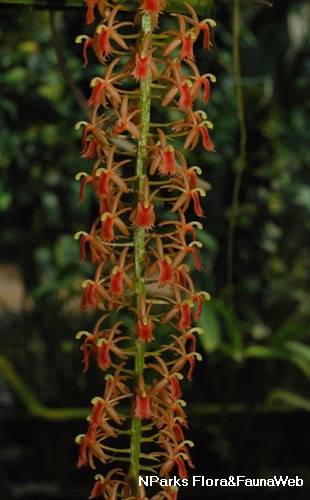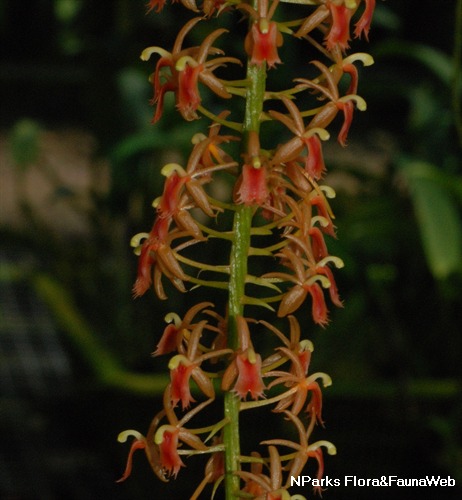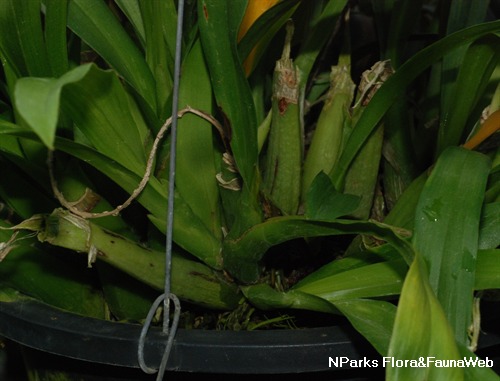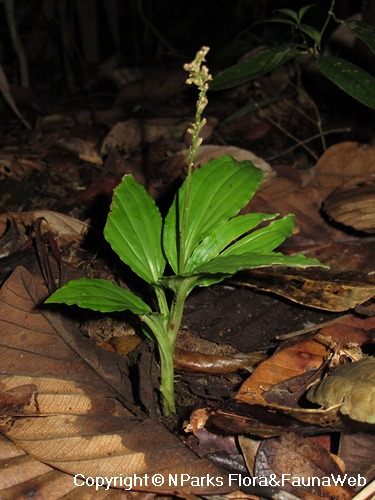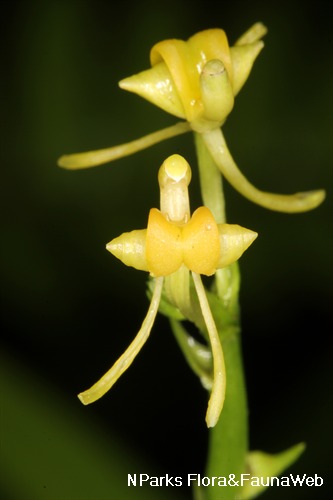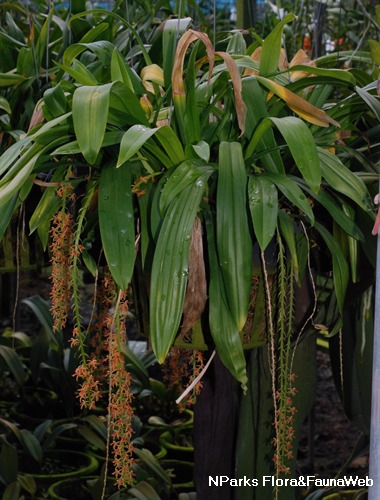
Name
Classifications and Characteristics
| Plant Division | Angiosperms (Flowering Seed Plants) (Monocotyledon) |
|---|---|
| Plant Growth Form | Epiphyte |
| Lifespan (in Singapore) | Perennial |
| Mode of Nutrition | Autotrophic |
Biogeography
| Native Distribution | Myanmar, Thailand, Borneo, Peninsular Malaysia and Sumatra. |
|---|---|
| Native Habitat | Terrestrial |
| Local Conservation Status | Non-native (Horticultural / Cultivated Only) |
Description and Ethnobotany
| Growth Form | It is an epiphyte and has a clumping, sympodial growth form. |
|---|---|
| Foliage | The leaves are borne 2 to a ovoid pseudobulb, 2 to 3cm tall. The leaves are lanceolate and can grow grow up to 18cm long. |
| Flowers | The flowers are borne on long, pendulous racemes up to 40cm long. The flowers bloom from the base to the apex of the inflorescence. The flower sepals anrd petals are orange in colour. The flower lip is orange, the centre of the lip is of a more vivid shade and has a lacerated lip margin. |
Landscaping Features
| Desirable Plant Features | Ornamental Flowers |
|---|---|
| Landscape Uses | Parks & Gardens, Interiorscape/ Indoor Plant, Suitable for Hanging Baskets |
Plant Care and Propagation
| Light Preference | Semi-Shade, [Remarks] (It is best grown under 70% shade. ) |
|---|---|
| Water Preference | Moderate Water |
| Propagation Method | Seed, Division |
Foliar
| Foliage Retention | Evergreen |
|---|---|
| Mature Foliage Colour(s) | Green |
| Foliar Type | Simple / Unifoliate |
| Foliar Arrangement Along Stem | Alternate |
| Foliar Attachment to Stem | Sessile |
| Foliar Shape(s) | Non-Palm Foliage |
| Foliar Margin | Entire |
| Foliar Apex - Tip | Acute |
Floral (Angiosperm)
| Flower & Plant Sexuality | Bisexual Flowers |
| Flower Colour(s) | Orange |
|---|---|
| Flower Grouping | Cluster / Inflorescence |
| Flower Location | Axillary |
| Flower Symmetry | Bilateral |
| Inflorescence Type | Raceme |
Image Repository
Others
| Master ID | 32037 |
|---|---|
| Species ID | 6440 |
| Flora Disclaimer | The information in this website has been compiled from reliable sources, such as reference works on medicinal plants. It is not a substitute for medical advice or treatment and NParks does not purport to provide any medical advice. Readers should always consult his/her physician before using or consuming a plant for medicinal purposes. |

